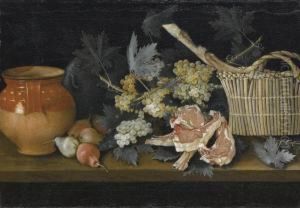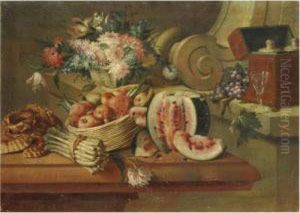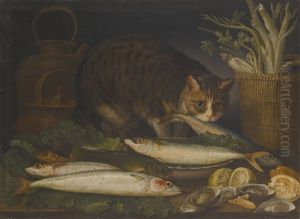Giovanni Rivalta Paintings
Giovanni Rivalta was an Italian sculptor born in 1837 in Genoa, Italy. He was part of the 19th-century Italian school of sculpture, which was characterized by a blend of traditional classical styles and emerging modern influences. Rivalta's work is often associated with Romanticism and the Italian Risorgimento, the period of Italian unification.
Rivalta trained at the Accademia Ligustica di Belle Arti in Genoa, where he developed his skills in sculpture under the guidance of Santo Varni, an established artist of the time. He later moved to Florence, which was a major center for the arts in Italy during the 19th century. There, he continued his studies and was influenced by other prominent sculptors such as Giovanni Duprè and Lorenzo Bartolini, who were known for their realistic and emotionally expressive work.
Throughout his career, Rivalta produced a variety of works, including public monuments, religious sculptures, and portrait busts. His sculptures were often characterized by their detailed execution and dynamic forms, capturing both the physical and psychological presence of his subjects. Some of his notable works include monuments to notable figures from Italian history and the Risorgimento, as these were popular subjects during the era of national unification.
Rivalta became a respected member of the artistic community, and his works were exhibited in various venues, gaining him recognition beyond Italy. Despite his success, he maintained a strong connection to his hometown of Genoa, where he contributed to the local artistic landscape through both his creations and his involvement in the Accademia Ligustica di Belle Arti.
Giovanni Rivalta passed away in 1925, leaving behind a legacy of work that reflects the artistic trends and political sentiments of his time. Today, his sculptures can still be seen in public spaces, museums, and galleries, preserving his contribution to the rich tapestry of Italian art.


